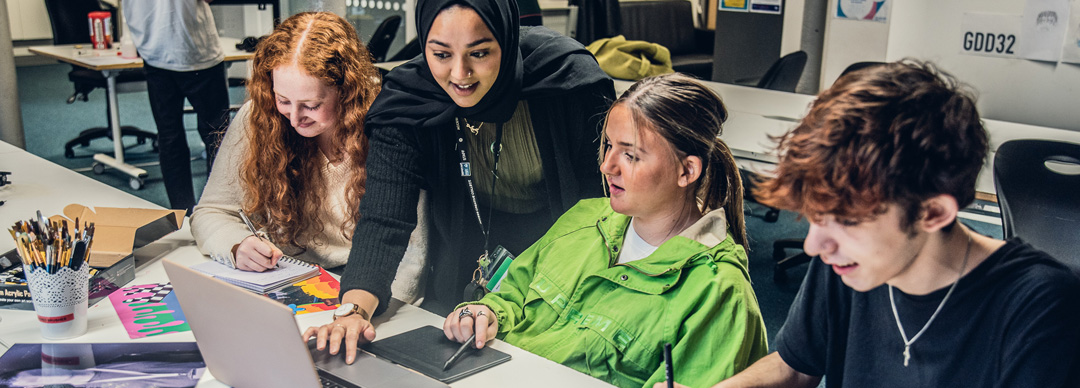October is Dyslexia Awareness month! Here at Access Creative College, we’re passionate about all of our staff and students having equal opportunities to succeed and we wanted to shine a spotlight on dyslexia and what we do to support.
![]()
What is dyslexia?
Dyslexia is a genetic learning disability caused by the way the brain develops. It’s best described as a combination of abilities and difficulties which affect the learning process in one or more of the following: reading, spelling and writing.
It is estimated that 1 in 10 people have dyslexia. The condition can also affect a range of different areas in people’s lives including their organisation and time-keeping, information processing, confidence in social situations, concentration and even daily routines.
It’s a common myth that people with dyslexia read words or letters backwards. This is, in fact, not the case and writing letters backwards is quite common amongst all young children when learning to read and write.
![]()
Famous dyslexic people
Did you know Britain’s favourite foodie Jamie Oliver is dyslexic. Other famous figures that identify as dyslexic include Richard Branson, Tom Cruise, Jennifer Aniston, Keira Knightley and Gwen Stefani. Historical figures that are believed to have had dyslexia include Walt Disney, Leonardo Da Vinci and Pablo Picasso.
As the list of incredible creative people above supports, studies have shown that dyslexic people excel in areas such as creative thinking and are more likely to be creative individuals. Those with dyslexia often excel at connecting ideas, thinking outside the box, 3D mapping and seeing the ‘big picture’. Often, they find success in the fields of art, computer science, design, drama, electronics, maths, mechanics, music, physics, sales and sports.

How we support our dyslexic learners
Our tutors are all fully briefed on what they can do to accommodate those students with dyslexia. We advise certain teaching styles such as:
- Talking to learners to find out what works best for them. Making a conscious effort to not repeat strategies that may have failed in the past
- Helping learners to find out what colour of paper suits them. It is often the case that dyslexic people find it difficult to read from or write on white paper. Coloured overlays may be helpful. Alternatively, if students use Google Docs to type their work, they can change the background colour of the document by selecting File, followed by Page Setup, then click on the Page Colour option and choose the colour that works best for them.
- Using technology. Using the computer will allow the learner to produce a piece of work without worrying about handwriting and enabling them to easily correct spelling mistakes. Spell check can be used.
- Helping learners to explore and understand their own effective ways of learning and to find their own strategies for success.
- Matching the individual learning style. For example if a learner thinks visually, teachers are advised to use a highlighted or bold typeface for certain words.
- Encouraging learners to use visual representations to help them (mind maps – information is presented in a visual format so the learner can see it all at once rather than having to follow it sequentially)
- Using multi-sensory teaching methods.
- One on one discussions about areas of difficulty.
![]()

Study tips for dyslexic students
- Ensure you’re sitting in the right place to be able to see the whiteboard properly.
- Use technology for writing and always use spell-check
- Trial and find out what your individual learning style is. Don’t repeat methods that do not work. For example, have you found you can understand and remember more information if you listen to audio rather than reading? Or have you found learning in short bursts, such as multiple 25 minute sessions rather than studying over long hours works better?
- Plan and allow yourself enough time to complete pieces of work. Speak to your tutor if you need assistance with time management and organisation.
- If you’ve got any text in a digital format, enlarge the text and put it in an easier to read font such as Arial, Comic Sans or Century Gothic.
- Celebrate every win. No matter how big or small!
If you think you or someone you know may be dyslexic, depending on your or their age, an assessment can be organised through school or college, or through local dyslexia associations. If you’re an ACC student or staff member, speak to your campus learning support team!
- Case Study: Will Edgar, Vocal Artist Student - December 18, 2024
- What are T Levels? - November 27, 2024
- ACC London Welcomes Entrepreneur and Creative Director Bwoy Wonder for Inspirational Workshop - October 24, 2024